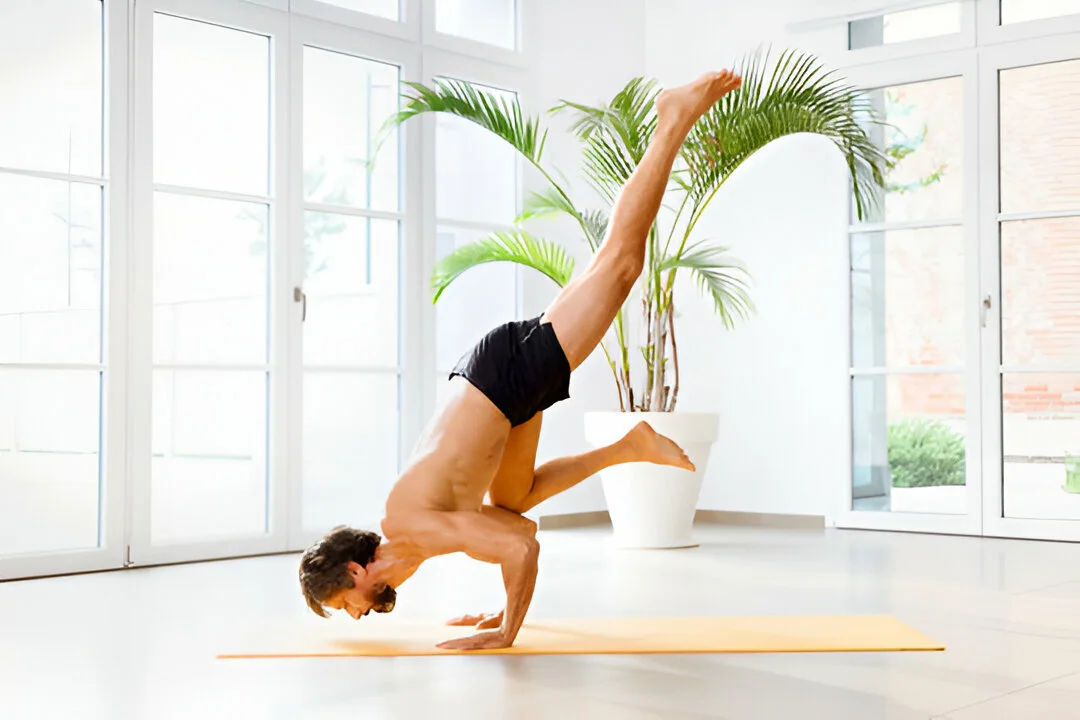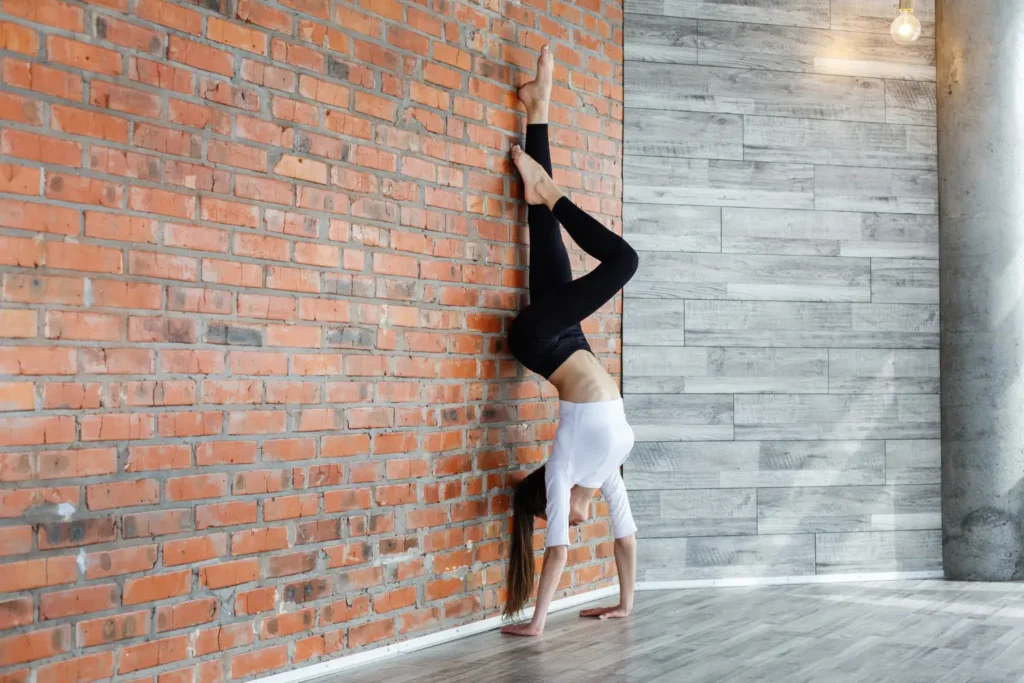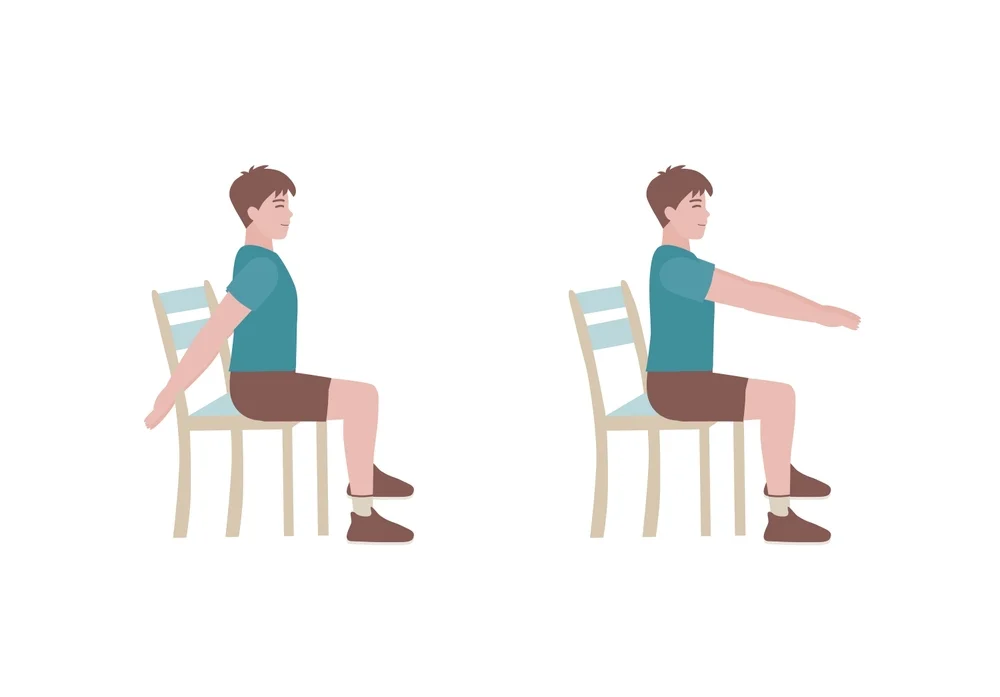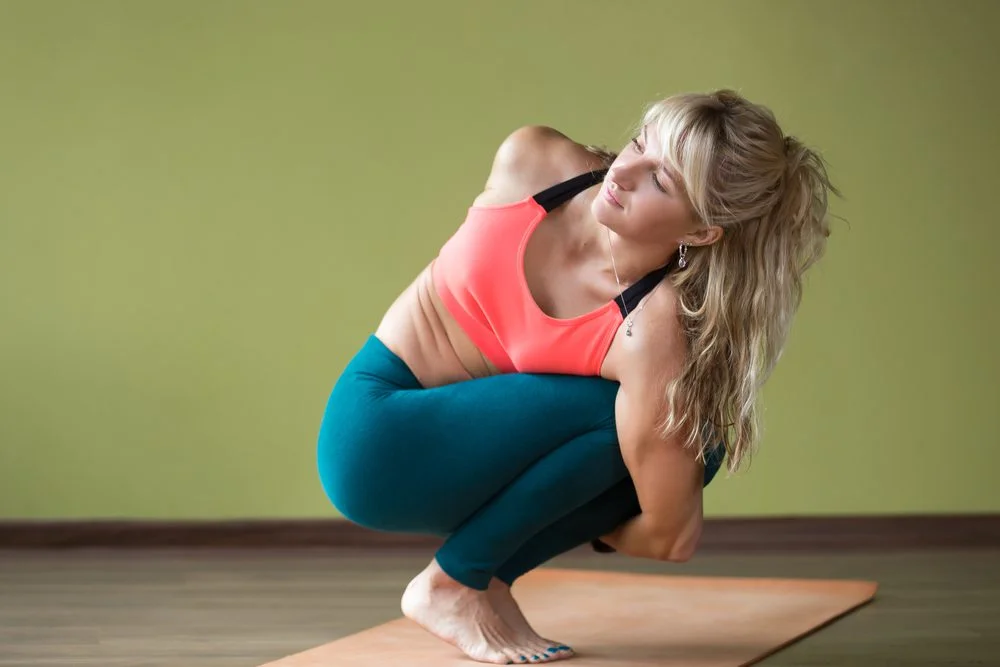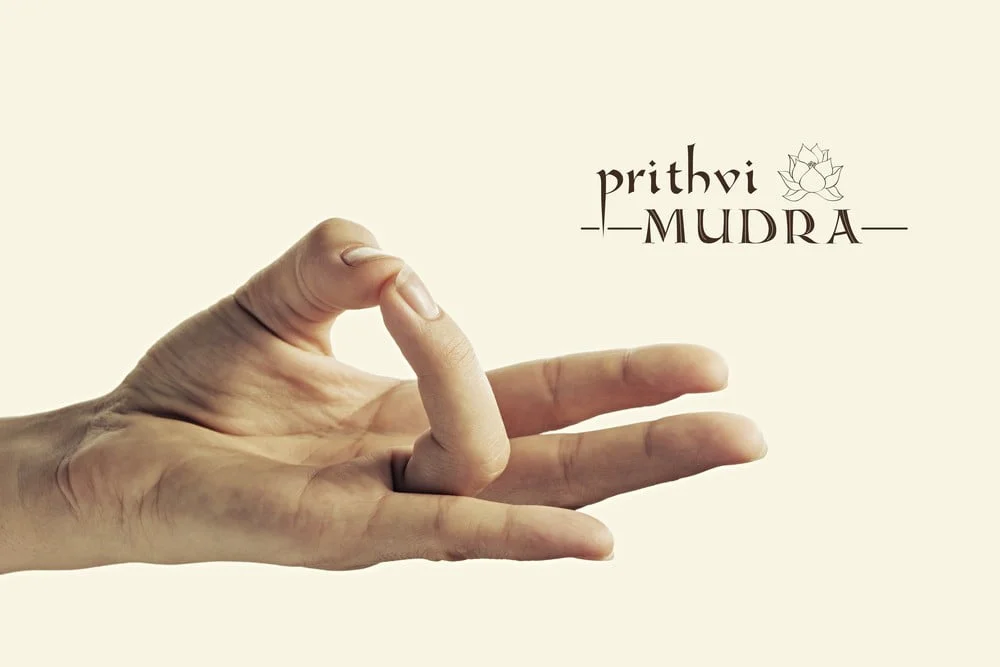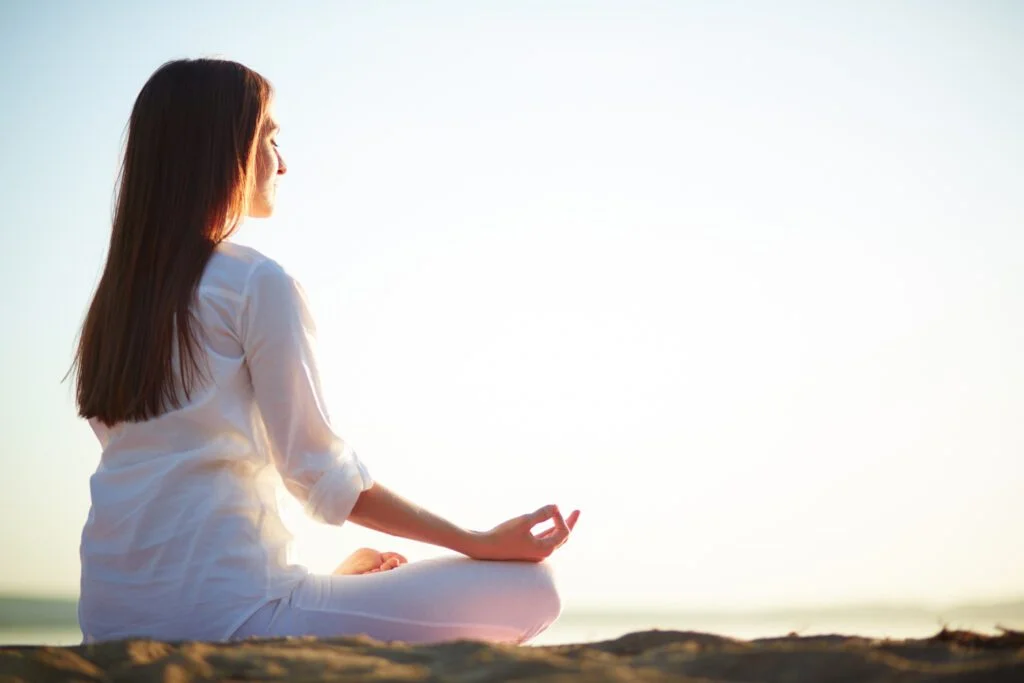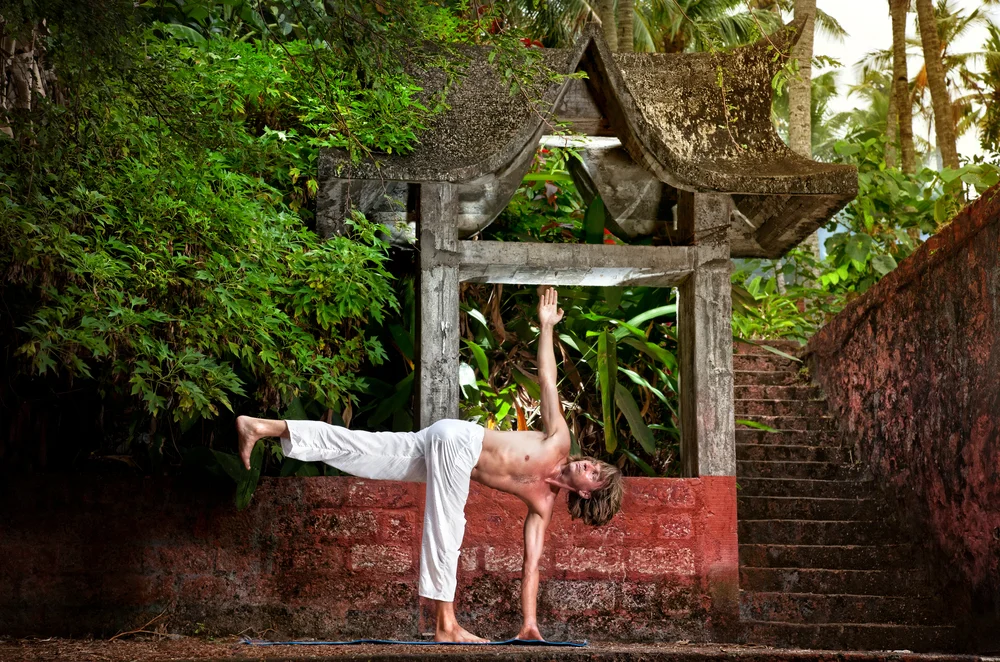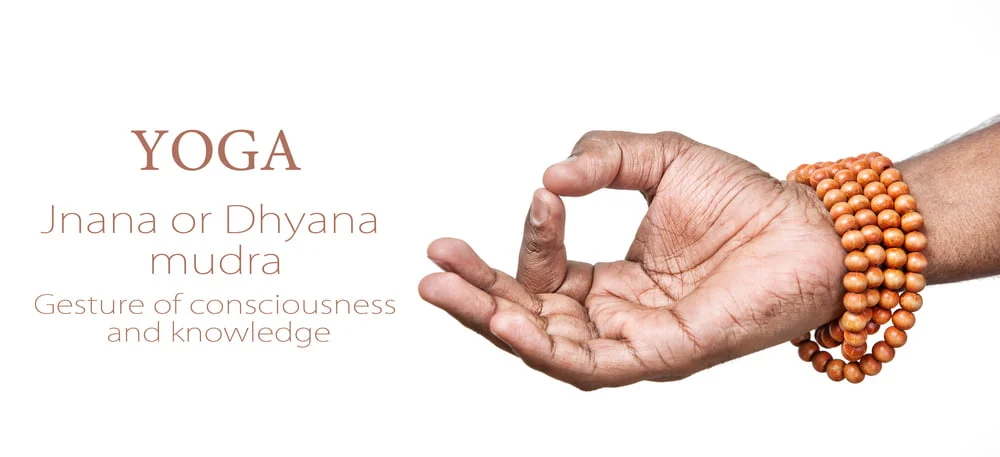Eka Pada Bakasana, also known as One-Legged Crow Pose, is an advanced arm balance in the practice of yoga. This posture requires strength, balance, and flexibility, making it a challenging yet rewarding pose to master. In this article, we will explore the various benefits of Eka Pada Bakasana, provide step-by-step instructions on how to perform the pose correctly, and explore different variations to deepen your practice. Whether you are a seasoned yogi looking to enhance your arm balance skills or a beginner wanting to explore new poses, Eka Pada Bakasana offers numerous physical and mental benefits that can take your yoga practice to new heights.
benefits of Eka Pada bakasana.
Eka Pada Bakasana is a challenging arm balance pose that offers numerous benefits for the mind, body, and spirit. Here are some of the key benefits of practicing Eka Pada Bakasana:
1. Strengthens the arms and wrists.
This pose requires the arms and wrists to bear the weight of the body, thereby building strength and stability in these areas. Regular practice can help increase upper body strength and improve overall arm and wrist endurance.
2. Tones the core muscles.
Eka Pada Bakasana engages the core muscles, including the abdominal and oblique muscles, as they work to maintain balance and stability in the pose. This can help tone and strengthen the core, leading to improved posture and stability in other physical activities.
3. Enhances balance and coordination.
Balancing on one arm while extending one leg in the air challenges both balance and coordination. Regular practice of Eka Pada Bakasana can improve these skills, leading to better overall body control and stability.
4. Stretches the hips and groin.
As the leg is extended backward in this pose, it provides a deep stretch to the hip flexors, outer hips, and groin. Regular practice can help increase flexibility in these areas and relieve tension and tightness that may accumulate due to prolonged sitting or physical activity.
5. Develops focus and concentration.
Balancing poses like Eka Pada Bakasana require immense focus and concentration. By directing the mind’s attention to the present moment and the alignment of the body, practitioners can enhance their ability to concentrate, cultivating a sense of mindfulness and mental clarity.
6. Builds confidence.
Mastering an arm balance pose like Eka Pada Bakasana can instill a sense of accomplishment and boost self-confidence. As practitioners progress in their practice and witness their own growth and ability to balance on one arm, they develop a greater sense of self-assurance and self-belief.
7. Encourages mental and emotional stability.
The physical and mental challenges of Eka Pada Bakasana require practitioners to find a sense of stability and calmness amidst the difficulty. This can translate into everyday life, helping individuals develop resilience, patience, and emotional control in challenging situations.
8. Stimulates digestion and detoxification.
The deep compression of the abdominal organs in Eka Pada Bakasana can stimulate digestion and help improve the functioning of the digestive system. Additionally, the pose can aid in detoxification by stimulating the lymphatic system and promoting the elimination of toxins from the body.
| 💡 Tips Verywel Fit.com Incorporating Eka Pada Bakasana into your yoga practice can provide a range of physical, mental, and emotional benefits. As with any yoga pose, it’s important to approach it mindfully, listen to your body, and work within your own limitations to prevent injury and promote a safe practice. |
How to do Eka Pada bakasana?
Here’s a step-by-step guide on how to practice Eka Pada Bakasana:
1. Warm-up: It’s important to warm up your body before attempting any advanced poses. Start with a few rounds of Sun Salutations or any other dynamic flow to activate your muscles and increase blood circulation.
2. Setup: Begin by coming into a squatting position with your feet hip-width apart. Place your hands on the mat in front of you, shoulder-width apart, fingers spread wide for stability.
3. Arm Positioning: Bend your elbows slightly and position them on the inside of your knees. This will create a shelf for your legs to rest upon later on.
4. Shift Your Weight: Begin to shift your weight forward, slowly transferring it from your feet to your hands. As you do this, lean your torso forward and engage your core muscles to maintain stability.
5. Lift One Leg: Start by lifting one leg off the ground, bending at the knee and bringing it towards your chest. Hug the knee into your armpit as much as possible.
6. Balance and Focus: As you lift your leg, find your balance by engaging your core and focusing your gaze forward. This will help you maintain stability and prevent any wobbling.
7. Extend the Leg: Once you feel stable, start extending your lifted leg straight back behind you. Keep the leg engaged and toes pointed to maintain a straight line.
8. Arm Balance: As you extend your leg, your other leg will naturally lift off the ground. Use the support of your arms and core strength to maintain balance and hold the pose.
9. Find Your Edge: Explore the pose by finding your comfortable edge. You can play with straightening the lifted leg further or bending the elbows slightly to deepen the pose.
10. Breathe and Hold: Stay in Eka Pada Bakasana for a few breaths, maintaining focus, and finding stability. Remember to breathe deeply and evenly throughout the pose.
11. Release: To come out of the pose, slowly bend your elbows, lower your extended leg, and carefully place both feet back on the mat. Shake out your wrists and take a moment to rest in Child’s Pose to release any tension in your body.
| 💡 Tips Verywel Fit.com Remember, Eka Pada Bakasana is an advanced pose that requires practice and patience. It’s essential to listen to your body, respect your limits, and never force yourself into any pose that doesn’t feel right. Practice regularly, and with time and dedication, you’ll gradually improve your strength and balance to master Eka Pada Bakasana. |
Eka Pada Bakasana Variations.
There are several variations of Eka Pada Bakasana that can be explored to deepen the practice and further challenge oneself.
1. Eka Pada Bakasana A.
In this variation, the practitioner begins in a squatting position with the hands shoulder-width apart on the mat. One knee is then placed on the upper arm, while the opposite leg extends straight out to the side. The weight is shifted forward onto the hands as the back foot lifts off the ground, allowing the body to balance on the hands and the one knee.
2. Eka Pada Bakasana B.
This variation takes the pose to the next level by extending both legs straight out to the sides. From the squatting position, the practitioner places both knees on the upper arms, keeping them close to the armpits. The weight is then shifted forward onto the hands, and the feet are lifted off the ground, extending the legs out to the sides.
| 💡 Tips Verywel Fit.com These variations of Eka Pada Bakasana not only challenge the practitioner’s physical strength and balance but also help to cultivate focus, concentration, and mental stability. It is essential to approach these poses with patience and a sense of exploration, listening to the body and honoring its limitations while gradually working towards greater depth and refinement in the practice. |
Bottom Line.
Eka Pada Bakasana, or One-Legged Crow Pose, is a challenging and invigorating yoga pose that offers numerous physical and mental benefits. This pose requires strength, balance, and flexibility, making it a great pose to challenge oneself and improve overall body awareness. By practicing Eka Pada Bakasana regularly, individuals can enhance their core and arm strength, increase their focus and concentration, and improve their overall sense of balance and stability.
Furthermore, this pose can provide a sense of empowerment and accomplishment as one successfully holds the pose and explores its variations. However, it is important to approach this pose with caution and proper alignment, listening to one’s body and gradually building strength and flexibility. With regular practice and patience, Eka Pada Bakasana can become a rewarding and enjoyable addition to one’s yoga practice.
How we reviewed this article:
Our team of experts is always monitoring the health and wellness field, ensuring that our articles are updated promptly as new information emerges. See Our Editorial Process
May 13, 2025
Written By: Patrick Franco
Reviewed By: Anirudh Gupta
Written By: Patrick Franco
Reviewed By: Anirudh Gupta

 Workout
Workout
 Meditation
Meditation





 Contact Us
Contact Us

